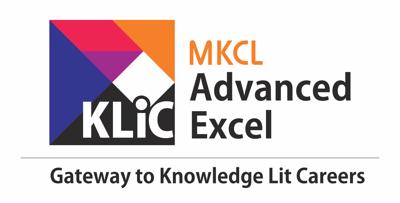- Learn to automate repetitive tasks and streamline data management processes in Excel using Macros and Visual Basic for Applications (VBA), including creating user forms and interacting with databases.
- Gain foundational knowledge about DBMS concepts, focusing on how databases are structured, managed, and utilized in data storage and retrieval.
- Explore the capabilities of Power Pivot in Excel, including data modeling, creating relationships, and utilizing DAX formulas for enhanced data analysis.
- Excel in the use of Power Query in Excel for cleaning, combining, and appending data to prepare it for analysis or reporting.
- Understand the principles of Excel automation using VBA, aiming to improve efficiency and functionality in data processing and reporting tasks.
- Learn the basics of Power BI for creating interactive reports and dashboards that enable data-driven decision-making in businesses.
- Acquire skills in using Google Looker Studio for creating, managing, and sharing interactive data reports and visualizations.

Data Analysis and Visualization Techniques using Excel
Learn to analyze and present data effectively using Excel. Focus on real-world applications of charts, graphs, and insights.
Introduction
What you'll learn ?
- Automate Excel Tasks with Macros and VBA: Create macros and write VBA code to automate tasks in Excel, such as managing customer information, handling personal finance data, and modifying entries in a database.
- Apply DBMS Principles: Understand the basic principles of DBMS and how they apply to data management and storage, enhancing their ability to work with databases effectively.
- Analyse Data Using Power Pivot: Utilize Power Pivot for complex data analysis, create data models, establish relationships between data sets, and apply DAX formulas to extract actionable insights.
- Transform Data with Power Query: Use Power Query to efficiently clean, combine, and append data, preparing it for analysis or reporting with enhanced accuracy and relevance.
- Implement Excel and VBA Automation: Develop automation solutions in Excel using VBA, improving workflow efficiency, data analysis, and report generation processes.
- Create Business Intelligence Solutions with Power BI: Design and implement interactive reports and dashboards in Power BI, facilitating advanced data visualization and business intelligence capabilities.
- Design Effective Reports with Google Looker Studio: Create, manage, and share interactive reports using Google Looker Studio, applying best practices for effective data visualization and report design.
Syllabus
- Designing of Excel Sheet as an Input Form for saving customers information
- Saving Data in Database using VBA code
- Enhancing VBA Code to save data in next available row
- Create User Forms for Personal Cash Manager
- Code for adding cash in database
- Code for adding expenses in database
- Create User Form to modify entry
- Code to modify specified entry
- Save code for modify entry
- Introduction to Power Pivot
- Data Analysis in Power Pivot
- Power Pivot Fundamentals
- Creating Relationships in Power Pivot
- Introduction to DAX Formulas
- DAX Measures
- Introduction
- Cleaning Data
- Combining Data
- Appending Data
- Introduction
- Creating Reports and Chart Types
- Action controls for Reports and Managing Reports
- Sharing Reports, Collaborating on Reports and Tips to create an effective report
Certificate
- MKCL provides certificate (for 30/60/90 hours courses) to the KLiC learner after his/her successful course completion.
Academic Approach
The Academic Approach of the course focuses on the “work centric” education i.e. begin with work (and not from a book !), derive knowledge from work and apply that knowledge to make the work more wholesome, useful and delightful. The ultimate objective is to empower the Learner to engage in socially useful and productive work. It aims at leading the learner to his/her rewarding career as well as development of the society.
Learning methodology
- Learners are given an overview of the course and its connection to life and work.
- Learners are then exposed to the specific tool(s) used in the course through the various real-life applications of the tool(s).
- Learners are then acquainted with the careers and the hierarchy of roles they can perform at workplaces after attaining increasing levels of mastery over the tool(s).
- Learners are then acquainted with the architecture of the tool or Tool Map so as to appreciate various parts of the tool, their functions and their inter-relations.
- Learners are then exposed to simple application development methodology by using the tool at the beginner’s level
- Learners then perform the differential skills related to the use of the tool to improve the given ready-made outputs.
- Learners are then engaged in appreciation of real-life case studies developed by the experts.
- Learners are then encouraged to proceed from appreciation to imitation of the experts.
- After imitation experience, they are required to improve the expert’s outputs so that they proceed from mere imitation to emulation.
- Finally, they develop the integral skills involving optimal methods and best practices to produce useful outputs right from scratch, publish them in their ePortfolio and thereby proceed from emulation to self-expression.
Evaluation Pattern
Evaluation Pattern of KLiC Courses consists of 4 Sections as per below table:
| Section No. | Section Name | Total Marks | Minimum Passing Marks |
|---|---|---|---|
| 1 | Learning Progression | 25 | 10 |
| 2 | Internal Assessment | 25 | 10 |
| 3 | Final Online Examination | 50 | 20 |
| Total | 100 | 40 | |
| 4 | SUPWs (Socially Useful and Productive Work in form of Assignments) | 5 Assignments | 2 Assignments to be Completed & Uploaded |
MKCL’s KLiC Certificate will be provided to the learner who will satisfy the below criteria:
- Learners who have successfully completed above mentioned 3 Sections i.e. Section 1, Section 2 and Section 3
- Additionally, learner should have completed Section 4 (i.e. Section 4 will comprise of SUPWs i.e. Socially Useful and Productive Work in form of Assignments)
- Learner has to complete and upload minimum 2 out of 5 Assignments
Courses Fee Structure from 01 July, 2025 Onwards
KLiC 30 hour course fee applicable from 01 July, 2025 all over Maharashtra| KLiC Course Duration | MFO: MKCL Share (Including 18% GST) |
ALC Share (Service Charges to be collected by ALC) |
|---|---|---|
| 30 hours | Rs. 300/- | Rs. 1,500/- |
Important Points:
* Above mentioned fee is applicable for all Modes of KLiC Courses offered at Authorised Learning Center (ALC) and at Satellite Center
* Total fee is including of Course fees, Examination fees and Certification fees
* MKCL reserves the right to modify the Fee anytime without any prior notice
* Above mentioned fee is applicable for all Modes of KLiC Courses offered at Authorised Learning Center (ALC) and at Satellite Center
* Total fee is including of Course fees, Examination fees and Certification fees
* MKCL reserves the right to modify the Fee anytime without any prior notice
